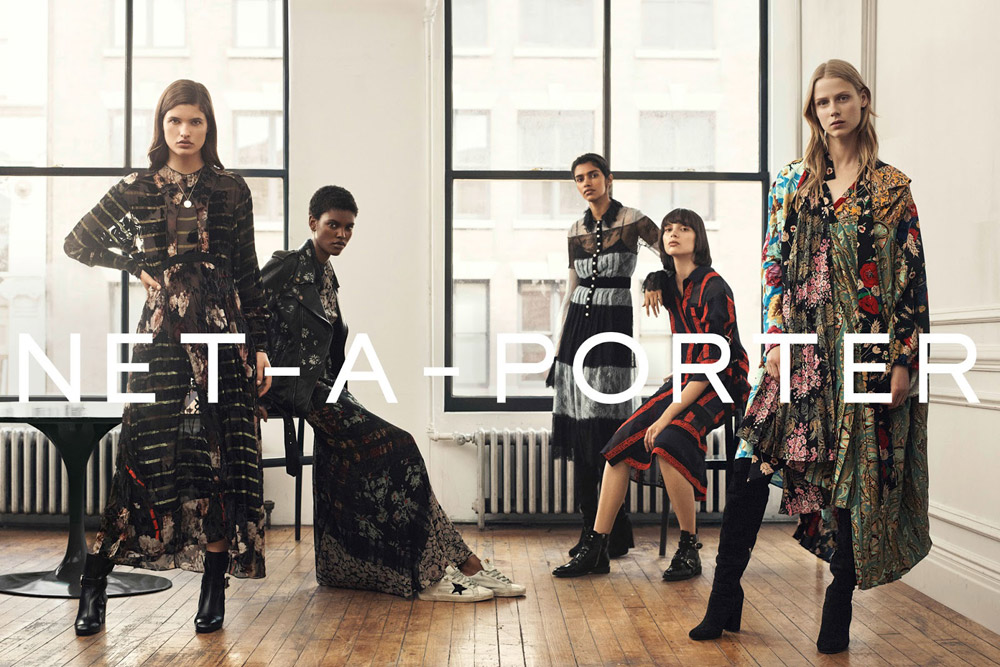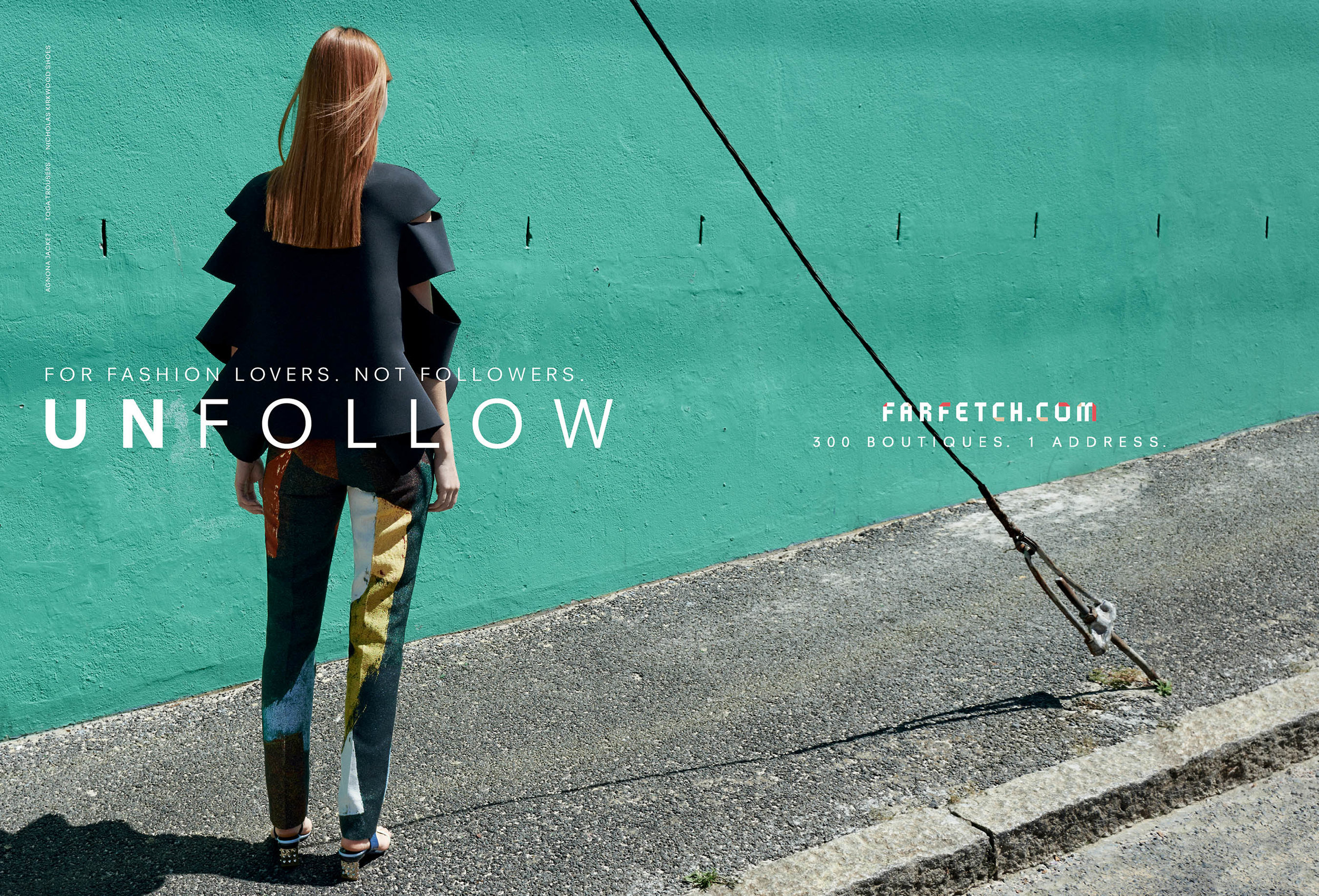
image: YNAP
“In Saudi Arabia, a kingdom where postal codes are rarely used, most people pay in cash, and shopping is done in giant air-conditioned malls, building an online retail business is no easy task,” per Reuters. And yet, the e-commerce sector in the United Arab Emirates has been rapidly growing thanks to an array of mergers and acquisitions over the past couple of years, with investors looking to tap into the region’s huge population of affluent and digitally savvy individuals.
Unsurprisingly, the region is the site of the latest show of force by e-commerce giants Yoox Net-a-Porter (“YNAP”) and Farfetch. In April 2016, YNAP made the first move, announcing that Mohammed Alabbar – by way of his Alabbar Enterprises company – would take a 4 percent stake in online fashion retail group in a move expected to push its growth in the UAE, Saudi Arabia, Kuwait, Qatar, Bahrain and Oman.
The international media described the joint venture between YNAP and Alabbar Enterprises, for which the Dubai entrepreneur paid 100 million euro ($113 million) in exchange for the stake, as part of a larger “a ground-breaking deal” to “create the leading online luxury retailer in the Middle East.”
Not to be outdone, Farfetch – which is now the home of Net-a-Poter’s founder Natalie Massenet, who acts as the London-based e-commerce site’s co-chair alongside founder Jose Neves – announced in January that inked a deal with Chalhoub Group, one of the region’s largest luxury distributors, for a joint venture of its own.
More than the Middle East
The two giants’ endeavors in the Middle East prove to be just the latest development in a larger squaring-off, one that has been rife with comparisons, some interesting valuations, and, of course, stark disagreements about which one of the e-commerce giants is better situated to thrive.
YNAP – which was created in 2015 as a result of the 6-year-long merger of Yoox, Italy’s sole “unicorn” (financial lingo for a billion-dollar start-up) with then-rival Net-a-Porter – is on track to de-list from the Borsa Italiana stock exchange following the end of a takeover offer launched by Cartier-owner Richemont with a valuation of approximately $6.2 billion, according to Reuters.
The mega-group has, over the past year or so, trotted out private labels; celebrated the year-anniversary of its London-based 500-person staffed Tech Hub, which is working “to accelerate innovation and deliver best-in-class technologies,” including in the customer service space; added a high-end jewelry and watches component to Net-a-Porter, which it expects to bring in $124 million in revenues by 2020; and signed a multi-year deal with Ferrari to offer the Italian automaker’s merch, for now, and if YNAP CEO Federico Marchetti has his way, the cars, themselves, in the not too distant future.
Nonetheless, YNAP has been routinely pegged as the less optimal of the two, particularly by Business of Fashion columnist and Exane Paribas’ analyst Luca Solca, who took a markedly strong stance against YNAP in a February 2017 article, entitled, The Trouble with Yoox Net-a-Porter. According to Mr. Solca, among other things, “Net-a-Porter risks being left behind by the industry’s changes” when it comes to technological advances in the industry and luxury brands’ strategies.

image: FarFetch
Solca further noted, “New models are emerging that potentially fit better with the strategies of luxury brands,” with “one such model [being] operated by FarFetch,” due to its practice of aggregating but not “holding any inventory itself.” That “model is certainly working,” he asserted, with FarFetch “growing at 60 percent per year and looks to be on course to overtake Net-a-Porter as the largest online aggregator within 24 months.”
In another article in November 2017, BoF questioned the valuation of YNAP, noting the emergence of two new rivals – Farfetch and MatchesFashion – which serve as “severe threats to [YNAP’s] dominance” as the sole leader in global luxury e-commerce.
But the suggestion that YNAP is the inferior player compared to 11-year old FarFetch is not without at least a handful of detractors. For instance, Michelle Wilson, an equities analyst at Berenberg Financial, stated early last year that the German investment bank “considers YNAP [to be] undervalued.”
Around the same time, other institutions, such as Morgan Stanley and New York-based Jeffries, also put forth favorable projections as to the strength of YNAP. Morgan Stanley, for one, reported that it viewed YNAP as “having the potential to deliver [earnings before interest and taxes] margins ahead of its peers [including Farfetch] on a three year review.”
Thereafter, in June 2017, Berenberg reported that “investor fears that competition restricting growth [for YNAP] … particularly Farfetch … are misplaced,” and that “the strength of YNAP’s business model is underappreciated.”
Still yet, as recently as late last month, Bloomberg’s Andrea Feldsted, in an article, entitled, Farfetch’s Farfetched Valuation, questioned whether the giant will “really [be able] able to crack online luxury retail without becoming a big spender itself.” She argued that “it is hard to see how [Farfetch’s] investment needs will wind up being as slim as the cigarette pants on its site.” With that in mind, Feldsted claimed that Farfetch’s prospective valuation, which relies heavily on “capital-light” model of not holding inventory but instead connecting consumers to third-party stockists and taking a cut of the sale, “might prove to be quite farfetched.”
As of now, Crunchbase reports that Farfetch – which recently launched a partnership with New York-based sneaker startup Stadium Goods and announced a fine jewelry marketplace with the likes of De Beers, Chopard, David Yurman, Pomellato and Tiffany & Co. – has brought in $721.5 million in funding from the likes of JD.com, IDG Capital, Vogue’s parent company Condé Nast, Index Ventures, Felix Capital, and prominent investor Carmen Busquets (the latter three have also invested in heavily BoF, among other fashion ventures).
Farfetch is said to be readying for an initial public offering, with a valuation of “around $6 billion,” per CNBC. Of course, the financial news site did not fail to note that the 6-billion figure is very similar to the current valuation of YNAP.
In the meantime, this is one rivalry we (and analysts) will be watching closely.













